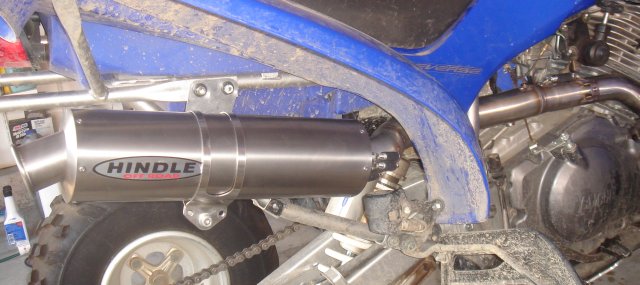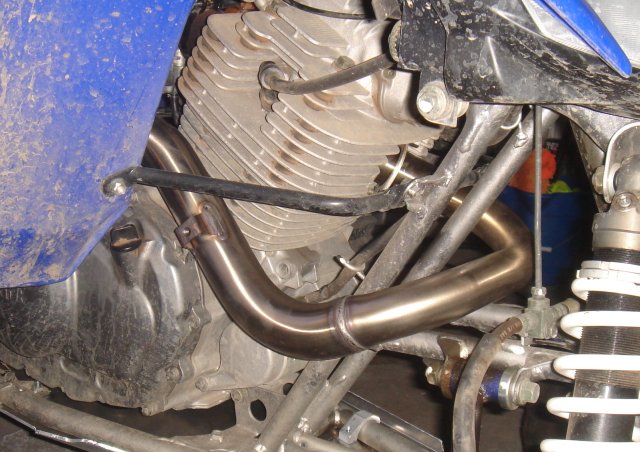griff
Well-Known Member
Some of you guys know, I was going to build a full system for my Raptor via Dale at Holeshot Performance. Unfortunately, both Dale and myself are swamped with other projects right now, and neither of us have the time. SO, I decided to make a few phone calls 
I was given a Hindle Full Exhaust for my Rap' courtesy of one of my old sponsors... SS header and pipe, and a 14" Full Titanium muffler (Can, Core, and End-caps, are all Ti), with sparky.
The whole system is as light as hell, I dont think it weighs more than a few pounds. The workmanship is excellent, and it sounds MEAN.



Dale made me a needle for the carb, which should be here tomorrow, and I'm just waiting on a K&N clamp-on and OuterWears from another of my old sponsors. I've made a velocity stack to accommodate the K&N, and I'm gonna add a 2" snorkel to the airbox, which should flow nicely.
I'll post more pics as the stuff gets here if anyones interested.
I was given a Hindle Full Exhaust for my Rap' courtesy of one of my old sponsors... SS header and pipe, and a 14" Full Titanium muffler (Can, Core, and End-caps, are all Ti), with sparky.
The whole system is as light as hell, I dont think it weighs more than a few pounds. The workmanship is excellent, and it sounds MEAN.



Dale made me a needle for the carb, which should be here tomorrow, and I'm just waiting on a K&N clamp-on and OuterWears from another of my old sponsors. I've made a velocity stack to accommodate the K&N, and I'm gonna add a 2" snorkel to the airbox, which should flow nicely.
I'll post more pics as the stuff gets here if anyones interested.



